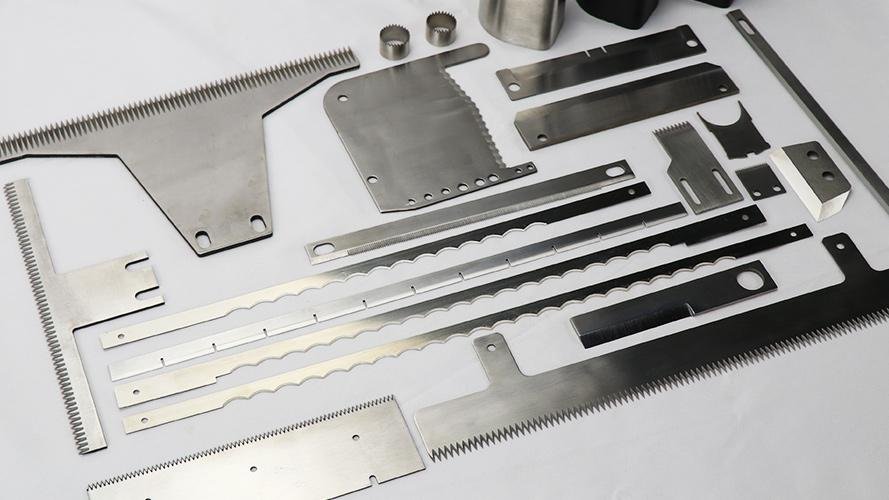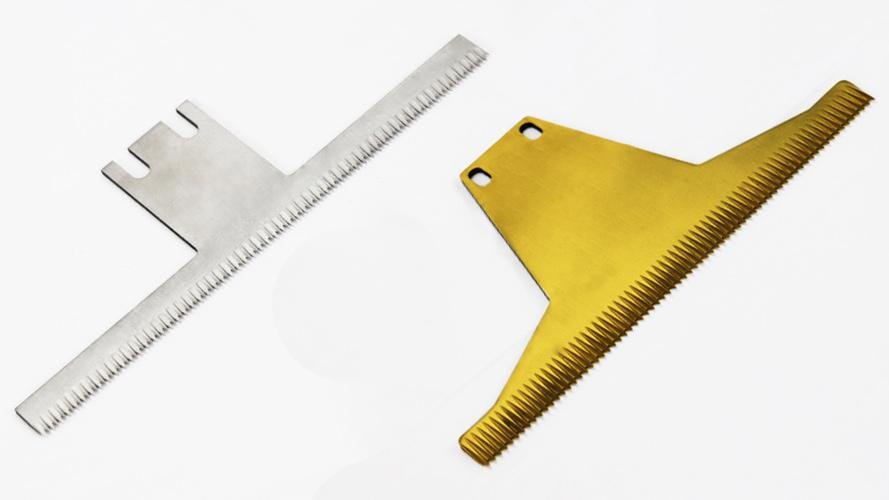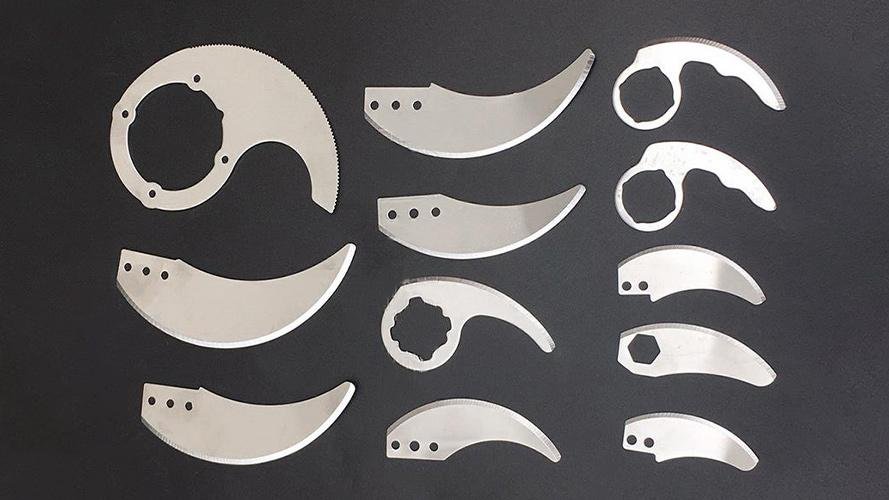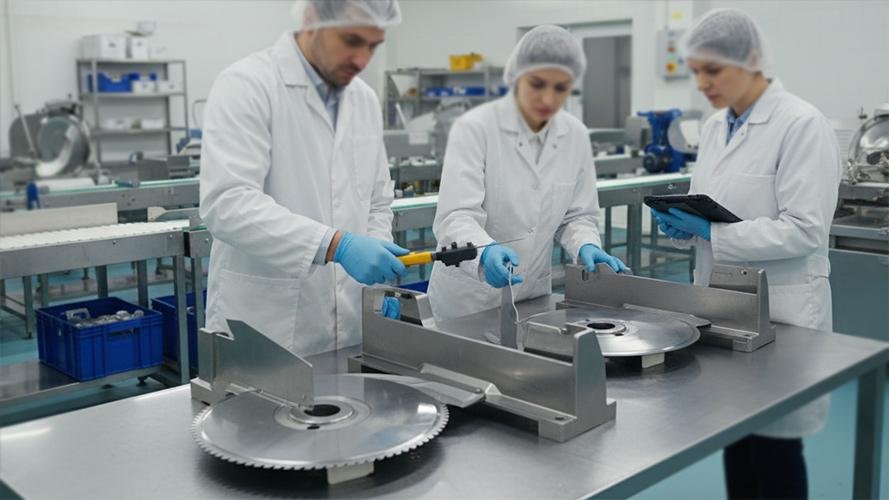Worried about food contamination from your cutting line? Dull or dirty blades can lead to recalls. Following key hygiene standards for your blades makes production safer and more reliable.
Food processing blades must meet strict safety and hygiene standards. This includes using food-grade materials1 like specific stainless steels, adhering to regulations like FDA and EFSA, and having a design that is easy to clean and sterilize, preventing bacterial growth and food contamination.
These standards are not just about checking boxes. They are practical rules that directly impact your product's safety and quality. When blades meet these standards, it means they are made from the right materials, designed for easy cleaning, and perform reliably without causing contamination. Let's look at what these standards mean in the real world. I want to share some stories from my experience to show why this is so important.
Why Are Food-Grade Materials And Certifications Non-Negotiable?
Using the wrong blade material can lead to rust and contamination. This puts your products at risk and can cause you to fail audits. Sticking to certified food-grade materials1 is essential.
Food-grade materials like 304 or 316 stainless steel are non-negotiable because they resist corrosion and do not transfer harmful substances to food. Certifications like FDA, EFSA, and ISO 22000 verify that the blades are manufactured safely and are suitable for direct food contact.
Making the right material choice is the first step. Different foods require different blade materials. For example, acidic foods like tomatoes or salty products need a more corrosion-resistant material. This is where standards like the FDA in the U.S. and EFSA in Europe come in. They provide a clear guide on what is safe. I remember a client in Germany, who runs a large bakery. He was seeing tiny rust spots on his bread dough after cutting. His old blades were not up to the task. We helped him switch to blades made from 316 stainless steel. This material has excellent corrosion resistance and fully complies with EFSA standards. The problem disappeared immediately. His production line became more reliable, and he passed his next hygiene audit with ease.
Material Comparison For Food Processing
| Feature | 304 Stainless Steel | 316 Stainless Steel | Standard Carbon Steel |
|---|---|---|---|
| Corrosion Resistance | Good | Excellent | Poor |
| Food-Grade Status | Yes | Yes | No |
| Best For | General-purpose use | Salty, acidic foods | Not for direct contact |
| Cost | Medium | High | Low |
How Do Coatings Improve Blade Hygiene And Efficiency?
Sticky foods build up on your blades, slowing everything down. This residue is hard to clean and can harbor bacteria. Applying the right coating makes blades non-stick and much easier to clean.
Coatings like PTFE (Teflon) or Titanium Nitride (TiN) create a non-stick, low-friction surface on the blade. This prevents food from sticking, reduces residue buildup, and makes cleaning easier. This directly improves hygiene and cutting efficiency, especially for sticky or delicate products.
A great blade is not just about the steel. The right surface coating can make a huge difference. Think about cutting cheese or raw meat. These products love to stick to metal. A non-stick coating, like PTFE, prevents this buildup. This means less downtime for cleaning and a lower risk of bacteria growing on leftover food particles. I worked with a client in Brazil, Maria, who manages a large poultry processing plant. Her team was stopping the line every hour to clean the blades. Raw chicken residue was a major hygiene concern. We suggested blades with a food-grade PTFE coating. The change was immediate. They could run the line for hours without stopping. Cleaning became faster, and her plant’s overall hygiene improved.
Blade Coating Benefits
| Coating Type | Primary Benefit | Ideal For | Wear Resistance |
|---|---|---|---|
| PTFE (Teflon) | Non-Stick, Easy Clean | Sticky foods (cheese, meat) | Medium |
| TiN (Titanium) | Hardness, Durability | Abrasive products (grains, nuts) | High |
| Uncoated | Basic Cutting | General, non-sticky foods | Low to Medium |
Does Blade Design Affect Food Safety?
Some blades are just hard to clean properly. Tiny cracks and rough surfaces can trap bacteria, no matter how much you scrub. A blade with a smooth, simple design is the solution.
Yes, blade design2 is critical for food safety. Blades should have a smooth surface finish and minimal crevices, holes, or sharp internal corners. These design features eliminate "dead spots" where food particles and bacteria can accumulate, making the blade much easier to clean and sanitize effectively.
Blade design is more than just how it looks. It is about how easy it is to clean. Every little corner, screw hole, or rough edge can become a hiding place for bacteria. That is why in the food industry, the best designs are often the simplest. We focus on creating blades with a very smooth surface, measured by something called a surface roughness (Ra) value. The lower the Ra, the smoother the blade and the less room for germs. I recall a project with a cheese producer in the U.S. named John. His factory used complex blades that were very difficult to clean. Even with their automated cleaning systems, hygiene tests were sometimes failing. We worked with him to redesign the blade, making it a single, smooth piece with no extra holes. The new blades were much easier to clean, and his hygiene issues were solved for good.
Design Features For Hygiene
| Design Feature | Poor for Hygiene | Good for Hygiene | Reason |
|---|---|---|---|
| Surface Finish | Rough, visible machine marks | Smooth, polished (low Ra value) | Prevents bacteria from clinging to the surface. |
| Corners | Sharp internal corners | Rounded, smooth corners | Eliminates "dead spots" that trap food. |
| Complexity | Many parts, holes, and crevices | Simple, one-piece construction | Reduces areas where germs can hide. |
How Do Blade Durability And Maintenance Impact Hygiene?
A blade that dulls or chips easily is a major problem. It can leave metal fragments in your food and crush instead of cut. Durable blades with a solid maintenance plan prevent this.
A durable blade that holds its edge stays sharp longer, ensuring a clean cut without crushing the food or creating excessive heat. Regular maintenance, including cleaning, inspection, and timely replacement, prevents the blade from chipping or breaking, which could introduce physical contaminants like metal fragments into the food stream.
Even the best blade will not perform safely forever. Durability and maintenance are two sides of the same coin. A sharp, durable blade makes a clean cut. A dull blade smashes the product, which can generate heat and damage its texture. Worse, a worn-out blade can chip, creating a risk of metal fragments ending up in the final product. That’s why a maintenance plan is not optional. I once helped a client in Japan, whose company makes very delicate confections. Precision was everything. Even slight blade wear was affecting the quality of his products. We supplied him with extremely durable blades and helped create a simple but strict maintenance schedule. His team now inspects blades daily and replaces them at set intervals, before they even have a chance to fail. This ensures every cut is perfect and safe.
Simple Blade Maintenance Checklist
| Frequency | Task | Purpose |
|---|---|---|
| After Every Use | Clean and Sanitize | Remove food residue and kill bacteria. |
| Daily | Inspect for Dullness and Damage | Ensure a clean cut and prevent chipping. |
| As Needed | Sharpen or Replace | Maintain performance and prevent contamination. |
Conclusion
Blade safety in food processing comes down to four key things: certified materials, smart coatings, cleanable design, and consistent maintenance. Getting these right protects your product and your brand.







